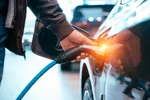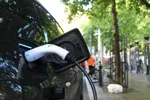The UK has beaten CO2 emission targets for the 17th consecutive year, according to a report by the Society of Motor Manufacturers and Traders (SMMT).
The annual SMMT New Car CO2 Report 2015 revealed that in 2014, new cars averaged just 124.6g/km – 4.2% below this year’s target of 130g/km.
The shift to more efficient diesel and petrol engines has been critical to this success, while significant growth of the alternatively fuelled vehicles (AFV) market has also contributed. Sales of plug-in vehicles increased fourfold to 14,498 in 2014 and, for the first time, the UK surged ahead in Europe, registering more new plug-ins than any other country. By the end of 2014, there were 52,000 AFVs, including hybrids, plug-ins and range extenders, on the road – a 58.1% increase on 2013.
In 2014, 68.6% met or fell under the 130g/km EU threshold, compared with just 0.9% in 2000, with buyers of these cars benefitting from the £0 first year Vehicle Excise Duty (VED) rate.
With a strict new EU-wide CO2 target of 95g/km by 2020, SMMT has published a second report by the Centre for Economics and Business Research (CEBR), which explores the challenges that must be met to sustain further long-term reductions in CO2, while also continuing to deliver sufficient revenue to government.
SMMT is calling on the next government to work closely with industry when it reviews the motoring taxation regimes, to ensure balance, fairness and stability in the market, and to reflect industrial strategy ambitions.
SMMT chief executive Mike Hawes said: “The UK automotive sector has made enormous strides in cutting emissions across the board and should be proud of its achievements. However, there is a long way to go, and meeting ambitious targets in 2020 will require ongoing support and investment. Striking the delicate balance between influencing buying behaviour, encouraging investment and maintaining critical tax income will be a big challenge. SMMT is committed to working with the next government to make the changes now that will help the industry meet the even greater cuts in CO2 demanded in the future.”













Login to comment
Comments
No comments have been made yet.